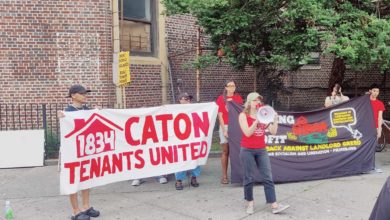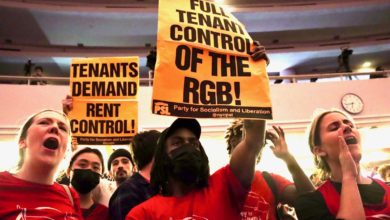While the struggle for affordable housing heats up across the country, the people here in California face a significant hurdle in fighting for housing justice. That hurdle is a 1995 law called the Costa-Hawkins Rental Housing Act, often known to housing advocates simply as Costa-Hawkins. But what is Costa-Hawkins and why is it such an affront to housing justice? If it’s really looked at so negatively by so many, how could it possibly be a law on the books in a state as seemingly progressive as California?
To understand these questions, we need to look at Costa-Hawkins in closer detail and historical context. In the 1970s, many municipal governments across California were pushed by grassroots tenants’ groups to implement rent control laws and counteract the growing housing costs caused by what was at that time a housing shortage. Fearing that the movement for tenants’ rights would diminish the profits of landlords and predatory development, a group of special interest businessmen in the Real Estate, Development, and Construction industries formed a group called the California Housing Council, to lobby the state government to pre-empt and weaken rent control regulations on a statewide level. The CHC would go on to fight for AB 3788 (which was vetoed by Governor Jerry Brown) and 1980’s Proposition 10 (the 1980 Prop 10 was defeated by an almost ⅔ majority), laws which would have shut down rent control completely.
While key figures in the Democratic Party managed to hold off the CHC for many years, they did win the ear of then-Assemblyman (and now U.S. Congressman) Jim Costa. After the retirement of his key opponents within the Democratic Party and election to the State Senate, Costa was able to reach across the aisle, co-sponsoring the Costa-Hawkins amendment with Republican Assemblyman Phil Hawkins, passing AB 1164 through, with overwhelming Republican support, and just enough Democratic support to pass. It was signed into law by far-right Republican Governor Pete Wilson, and it has been known as the Costa-Hawkins Rental Housing Act ever since.
The provisions of Costa-Hawkins do a few key things:
-
- Exempt single-family homes, condos, and “new” buildings from any local rent control laws. “New” is defined in the act as anything built after its passage. In cities with rent control laws already on the books, it defines “new” as anything built after the passage of the prevailing local rent control ordinances (LA has the oldest active rent control ordinance in the state, dating back to 1978; San Francisco’s dates back to 1979; San Diego has no rent control at all).
- Largely eliminate the practice of vacancy control, allowing landlords to raise the rent of a unit by any amount they choose when tenants move out or are evicted, incentivizing landlords to push out tenants in favor of new renters with higher purchasing power.
- Prohibit a city with an existing rent control ordinance at the time of the act’s passage from expanding the provisions of those rent control laws.
While there have been efforts to repeal the act (including an effort that was defeated earlier this year at the committee stage by Republican opposition and Democratic abstention), this year is the first time since the passage of Costa-Hawkins that the people have had the ability to put the statewide restriction on rent control to a vote. This is the first opportunity we’ve been given to show the real estate, construction, and development lobbies that the people want to choose rent control at the local level.
The campaign for effective rent control laws comes at a time where a powerful grassroots fight for housing rights, provoked by a massive and expanding housing crisis in California, has come into being. Some 1.7 million families in California now pay more than half of their income on rent, and rental prices have shot up by as much as 40 percent in places like the Bay Area in the last three years, far outpacing increases in the minimum wage. Homelessness has risen by over 75 percent in the last six years. This new movement has been typified by anti-gentrification struggles, action around homelessness, and organizations like the Los Angeles Tenants’ Union, which has helped launch multiple rent strikes, and brings together associations of renters standing up to abuses from landlords, developers, and the local and state institutions largely captured by the former. Some 407,769 signatures were collected to get the anti-Costa Hawkins bill, Proposition 10, on the ballot.
Prop 10 is supported by organizations from the grassroots (like the LA Tenants’ Union, the Party for Socialism and Liberation, Democratic Socialists of America, She Does Movement, Shelter K-Town, and many more) to the more establishment. This movement for Prop 10, though just one part in a long struggle to change the face of housing in California and beyond, shows the power of ordinary people who cannot wait any longer for real change. The landlord-run opposition to Prop 10 is spending tens of millions of dollars on ads to stop Prop 10. There needs to be a massive grassroots mobilization to overcome the millionaires’ advertising and prevent the people from being taken in by landlords’ lies.
The people of Los Angeles, San Diego, San Francisco, Oakland, Long Beach, and the cities most impacted by the housing crisis all over the state have the opportunity to show the politicians in Sacramento what we want: Repeal Costa-Hawkins! Affordable new housing construction! Stricter rent control and vacancy control now! Yes on Proposition 10!





